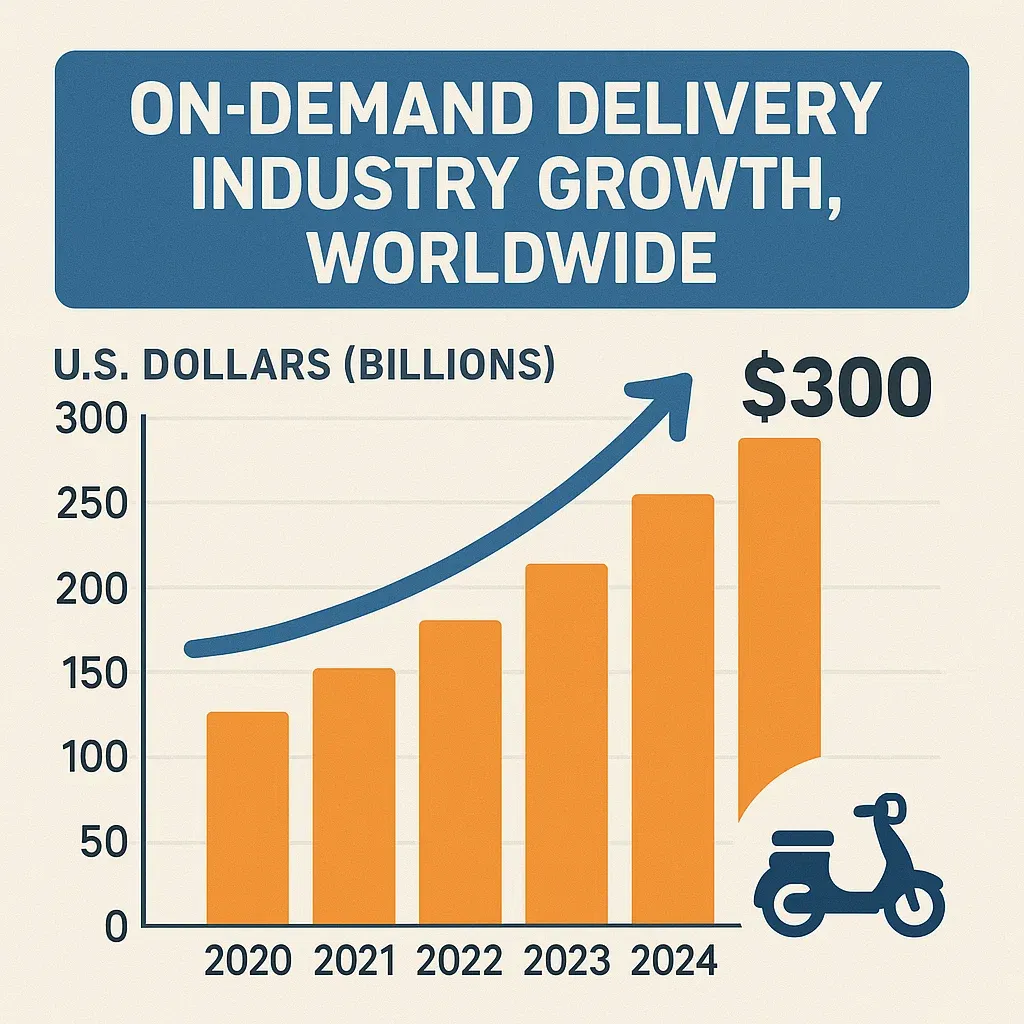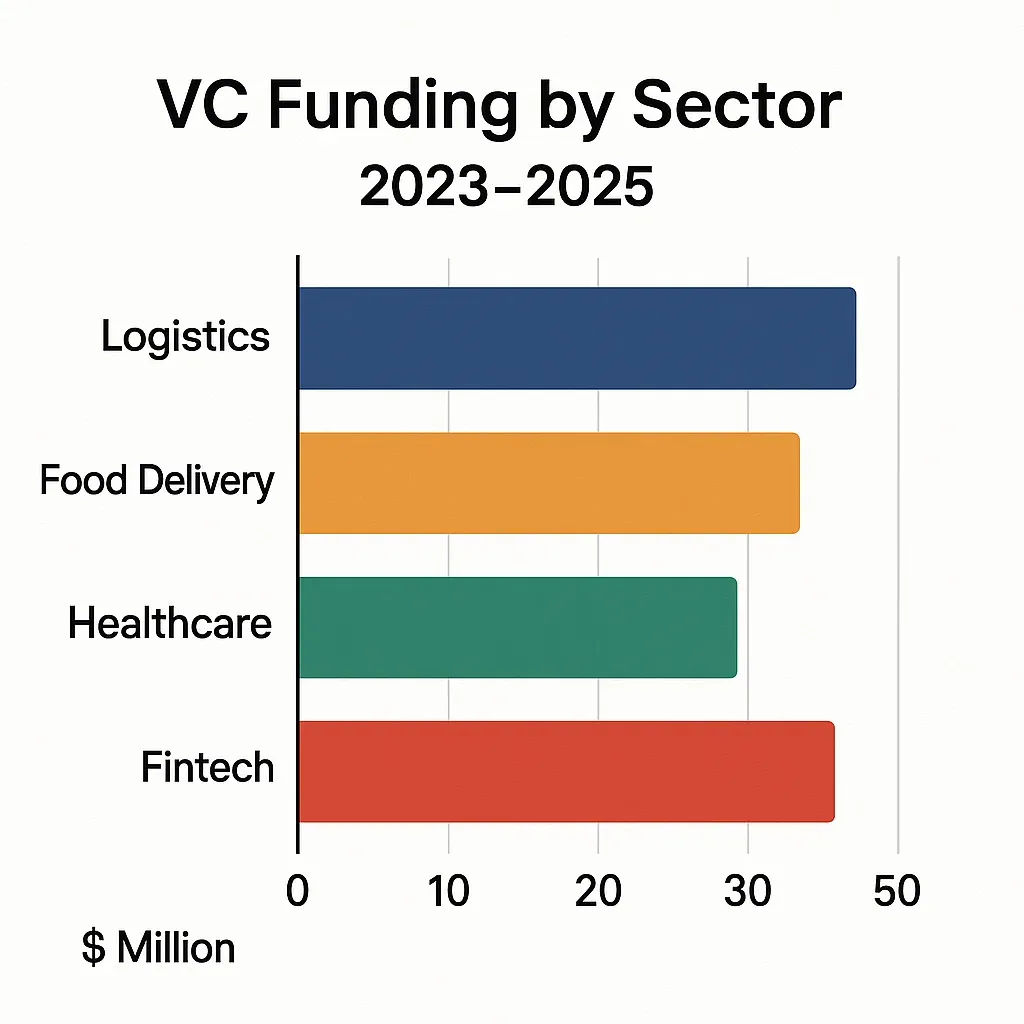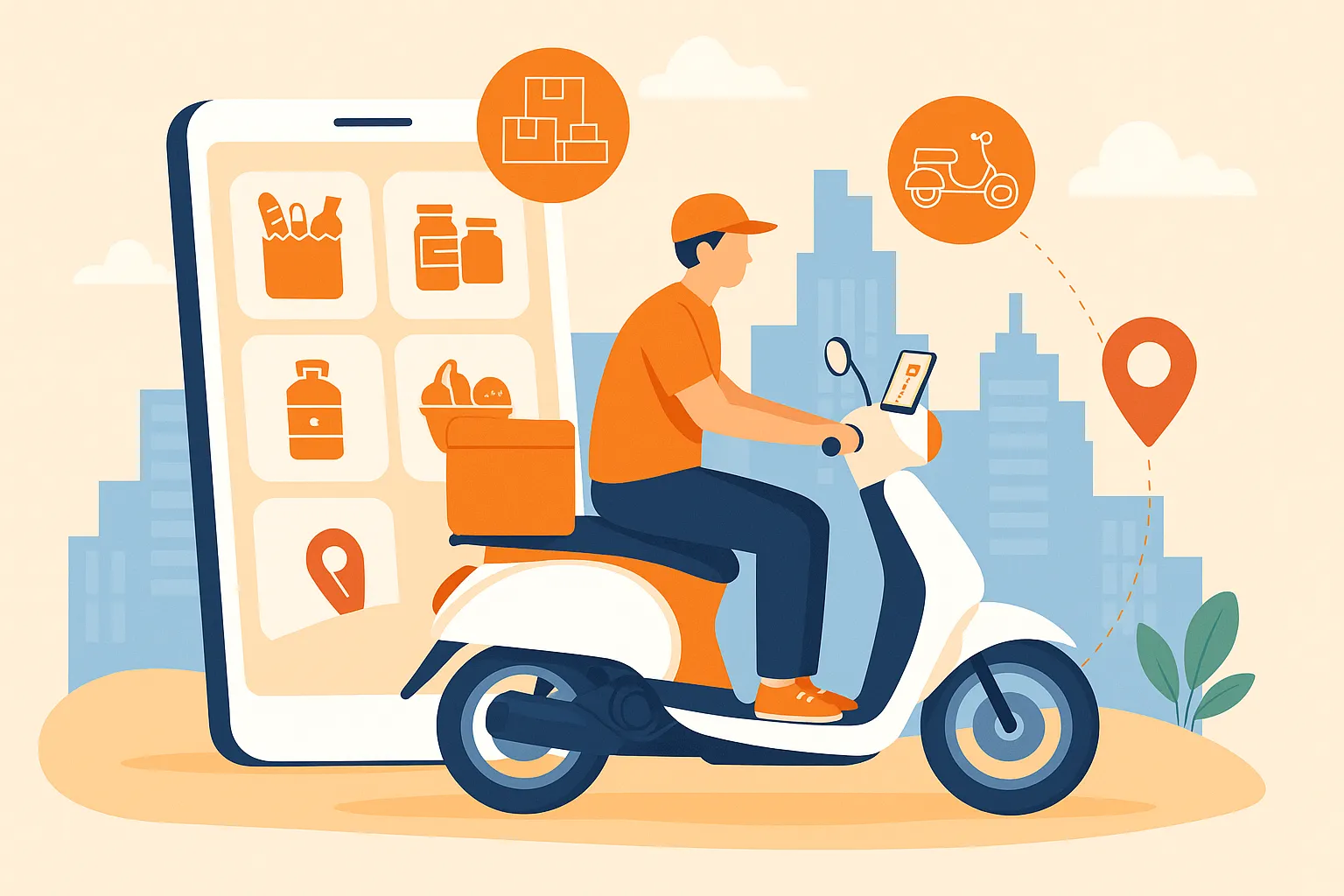If you’re a startup founder, entrepreneur, or digital agency mapping out your next big launch, on-demand delivery apps in 2025 should be at the top of your radar. The post-pandemic world has only accelerated the appetite for convenience-first services — groceries, medicine, personal errands, logistics, and everything in between are now expected at the doorstep in under an hour.
According to a report by Statista, the global on-demand delivery market is forecasted to reach a staggering $533.5 billion by 2025. With consumer behavior shifting toward immediacy and platforms like Instacart, Uber Eats, and Dunzo setting high standards, the market is booming. More importantly, it’s still full of untapped micro-niches and regional opportunities.

Why On-Demand Delivery Apps Are a Hot Opportunity in 2025
The year 2025 represents a perfect storm of tech maturity, behavioral change, and startup opportunity. The proliferation of smartphones, real-time tracking, and mobile payments has streamlined logistics like never before. But that’s only part of the story.
According to CB Insights, over 60% of recent VC investments in consumer tech have gone into logistics, hyperlocal services, and last-mile delivery startups. Simultaneously, major players are acquiring smaller startups in niche markets, signaling both high demand and high valuation potential.
Additionally, behavioral shifts — from remote work to digital-first lifestyles — are increasing demand for everything from instant groceries to custom laundry pickup services.
Notably, many Tier 2 and Tier 3 cities remain underserved by existing players, offering founders a first-mover advantage in regional markets.

Top Profitable On-Demand Delivery App Ideas to Launch in 2025
1. Instant Grocery Delivery App
This app enables users to order fresh groceries and daily essentials with lightning-fast delivery from nearby vendors. It caters to time-sensitive urban lifestyles and supports local inventory integration. Ideal for high-repeat use and driving daily engagement.
Monetization Strategy: Delivery fees, product markups, subscription models
Why it Works in 2025: With platforms like Blinkit paving the way, urban users now expect 10-minute deliveries. High volume and frequent use ensure strong ROI.
2. Prescription & Healthcare Delivery App
Designed for scheduled and emergency deliveries of medicines, healthcare items, and supplements, this app connects pharmacies with patients. It supports regulated prescriptions and user authentication, offering safe, timely, and compliant service.
Monetization Strategy: Vendor partnerships, premium delivery charges, subscription tiers
Why it Works in 2025: Aging populations and remote care demand more accessible delivery options, especially in underserved areas.
3. Home Services & Essentials Delivery App
This solution bundles essential deliveries — like gas cylinders, water cans, and cleaning supplies — with optional home service bookings. By combining utility and scheduling features, it simplifies household management for busy users.
Monetization Strategy: Convenience fees, service subscriptions, commission from vendors
Why it Works in 2025: Customers increasingly value consolidated platforms that reduce mental load.
4. Local Artisan & Farm-to-Table Delivery App
Empowers local artisans, farmers, and small producers to deliver organic produce, baked goods, and handmade crafts directly to customers. The app appeals to eco-conscious buyers seeking ethical, fresh, and community-driven alternatives.
Monetization Strategy: Marketplace commission, delivery charges, featured listing fees
Why it Works in 2025: Rising demand for sustainable, local, and ethical products means a high-value niche with emotional resonance.
5. Hyperlocal Courier/Parcel Delivery App
Ideal for urban dwellers and professionals, this app allows users to quickly send parcels, documents, or forgotten items across town. Real-time tracking, proof of delivery, and flexible pickup options make it a practical and scalable utility.
Monetization Strategy: Per-delivery pricing, express delivery upsell, business tie-ins
Why it Works in 2025: A practical, high-urgency solution for professionals, freelancers, and even families.
6. B2B Inventory Replenishment Delivery App
Built for small retailers, restaurants, and cafes, this app facilitates same-day delivery of wholesale goods and inventory restocks. It streamlines ordering from suppliers and automates recurring orders to reduce business downtime.
Monetization Strategy: Tiered business plans, bulk delivery pricing, subscription for auto-restocking
Why it Works in 2025: Digitally transforming SME supply chains is the next frontier, and most solutions are still built for consumers.
What Makes an App Profitable in the On-Demand Delivery Niche?
Profitable on-demand delivery apps share several common threads:
- Recurring Revenue: Whether through subscriptions or high-repeat orders
- Low Overhead: Thanks to third-party fleets or decentralized vendor partnerships
- High Retention: When the user experience is seamless and immediate
- Aggressive Acquisition Models: Using referral bonuses, local marketing, and influencer tie-ins
Most importantly, ready-made clone apps from trusted providers like Miracuves allow founders to skip months of development. With proven tech stacks and tested user flows, you launch faster, test quicker, and iterate smarter.
Cost to Build an On-Demand Delivery App in 2025
Basic MVP: $8,000 – $15,000
Mid-range Solution: $20,000 – $40,000
Advanced Platform with AI & Custom Integrations: $50,000 – $100,000+
Key cost factors include:
- Number of user roles (e.g., customer, driver, vendor)
- Real-time tracking and notifications
- Payment integrations
- Admin dashboard complexity
- UX/UI sophistication
Why choose a clone?
Clone app solutions from Miracuves can cut development time by 60% and cost by up to 40%. Whether you’re looking at a Dunzo clone, Instacart clone, or custom hybrid — Miracuves has you covered with scalable, white-label options.
Tips for Founders to Launch a Successful On-Demand Delivery App
- Start with an MVP: Don’t try to be everything on day one. Solve one major pain point well.
- Focus on UI/UX: A confusing app will tank retention. Prioritize clean, intuitive design.
- Validate before you build: Use landing pages, surveys, or pre-orders to test real demand.
- Plan backend scalability: Choose robust architecture and cloud services that grow with you.
- Invest in marketing early: Pre-launch campaigns, referral programs, and local partnerships help you scale faster.
Conclusion
On-demand delivery apps are no longer a novelty — they’re the new normal. In 2025, the demand for faster, localized, and personalized delivery services is only going to grow. Entrepreneurs who move quickly and wisely will have a significant first-mover advantage in specialized niches.
By choosing a reliable clone app development partner like Miracuves, you can skip the tech hurdles and focus on what really matters — solving real-world problems for real users. The market is primed, the tools are ready, and your next big win could be just a sprint away.
At Miracuves, we help innovators launch high-performance app clones that are fast, scalable, and monetization-ready. Ready to turn your idea into reality? Let’s build together.
FAQs
Q:1. How much does it cost to build an on-demand delivery app?
It ranges from $8,000 for MVPs to $100,000+ for advanced custom platforms.
Q:2. What features should a successful delivery app include?
Real-time tracking, secure payments, user ratings, and a powerful admin dashboard.
Q:3. Is it better to build from scratch or use a clone solution?
Clone solutions are faster, more cost-efficient, and ideal for rapid market testing.
Q:4. How can I monetize my delivery app?
Use a mix of delivery charges, vendor commissions, ads, and subscriptions.
Q:5. How long does it take to launch using a clone?
With Miracuves, you can go live in 2–4 weeks depending on customizations.
Q:6. Which on-demand niche is the most profitable?
Grocery and B2B inventory delivery top the list due to frequency and order size.
Related Articles:








